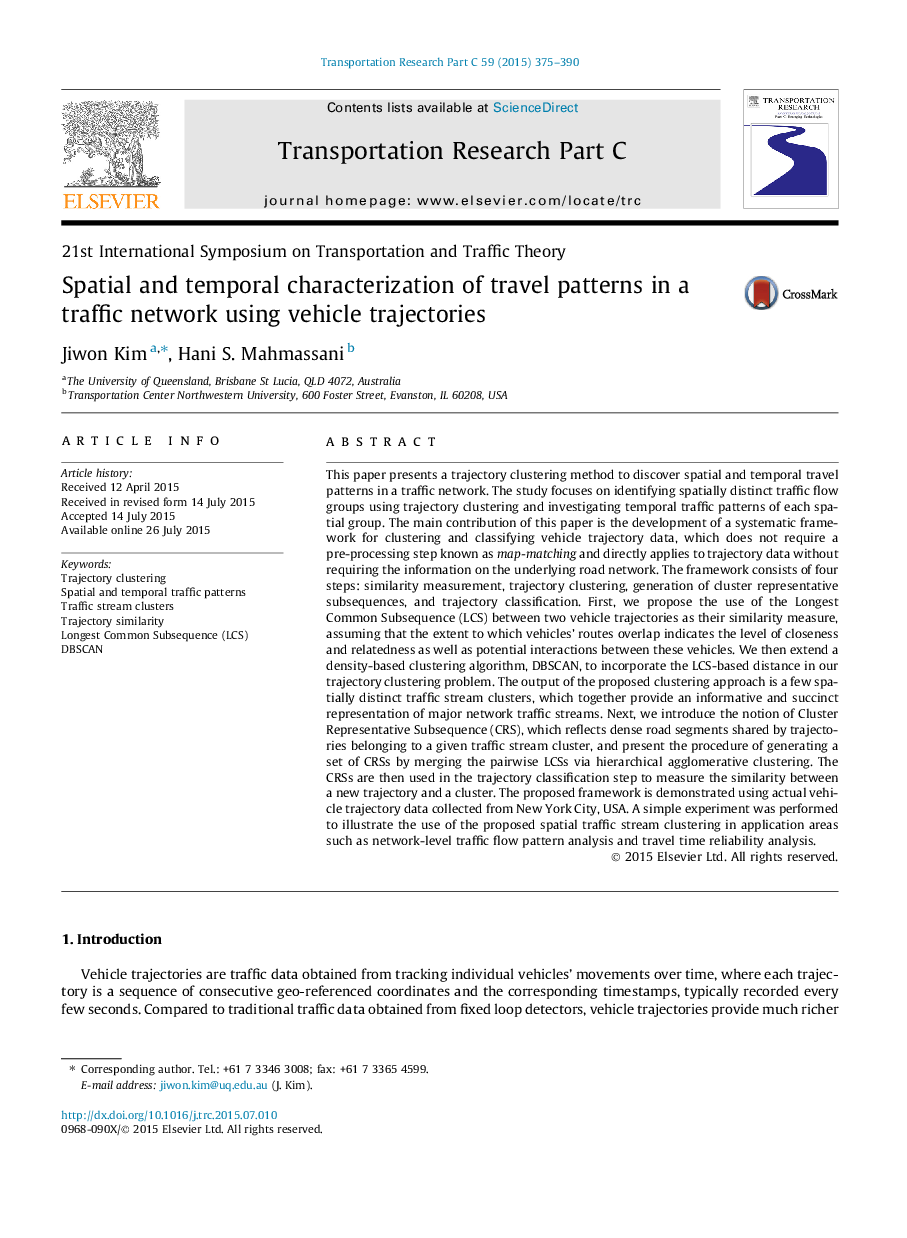| Article ID | Journal | Published Year | Pages | File Type |
|---|---|---|---|---|
| 524876 | Transportation Research Part C: Emerging Technologies | 2015 | 16 Pages |
•Proposes a vehicle trajectory clustering method that uses the Longest Common Subsequence (LCS) as a similarity measure and DBSCAN as a clustering algorithm.•Performs clustering without requiring map-matching.•Presents systematic procedures for clustering and classification of trajectory data.•Demonstrates the proposed clustering method using actual trajectory data.•Provides implications of the produced clustering patterns and discusses their applications in spatial and temporal traffic pattern recognition.
This paper presents a trajectory clustering method to discover spatial and temporal travel patterns in a traffic network. The study focuses on identifying spatially distinct traffic flow groups using trajectory clustering and investigating temporal traffic patterns of each spatial group. The main contribution of this paper is the development of a systematic framework for clustering and classifying vehicle trajectory data, which does not require a pre-processing step known as map-matching and directly applies to trajectory data without requiring the information on the underlying road network. The framework consists of four steps: similarity measurement, trajectory clustering, generation of cluster representative subsequences, and trajectory classification. First, we propose the use of the Longest Common Subsequence (LCS) between two vehicle trajectories as their similarity measure, assuming that the extent to which vehicles’ routes overlap indicates the level of closeness and relatedness as well as potential interactions between these vehicles. We then extend a density-based clustering algorithm, DBSCAN, to incorporate the LCS-based distance in our trajectory clustering problem. The output of the proposed clustering approach is a few spatially distinct traffic stream clusters, which together provide an informative and succinct representation of major network traffic streams. Next, we introduce the notion of Cluster Representative Subsequence (CRS), which reflects dense road segments shared by trajectories belonging to a given traffic stream cluster, and present the procedure of generating a set of CRSs by merging the pairwise LCSs via hierarchical agglomerative clustering. The CRSs are then used in the trajectory classification step to measure the similarity between a new trajectory and a cluster. The proposed framework is demonstrated using actual vehicle trajectory data collected from New York City, USA. A simple experiment was performed to illustrate the use of the proposed spatial traffic stream clustering in application areas such as network-level traffic flow pattern analysis and travel time reliability analysis.
